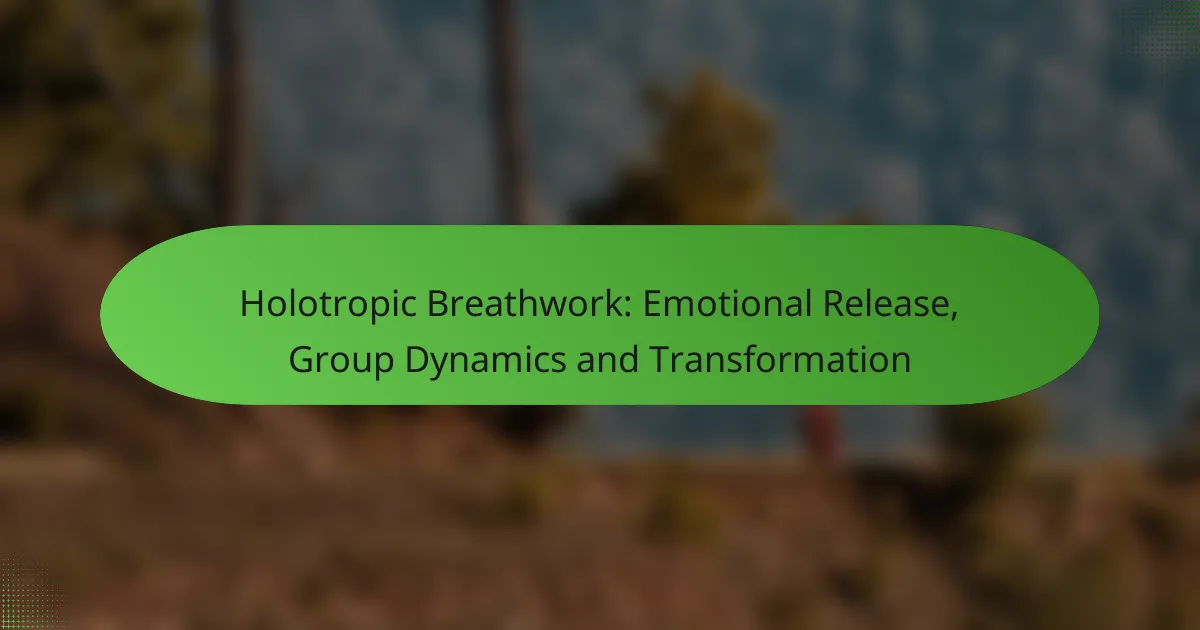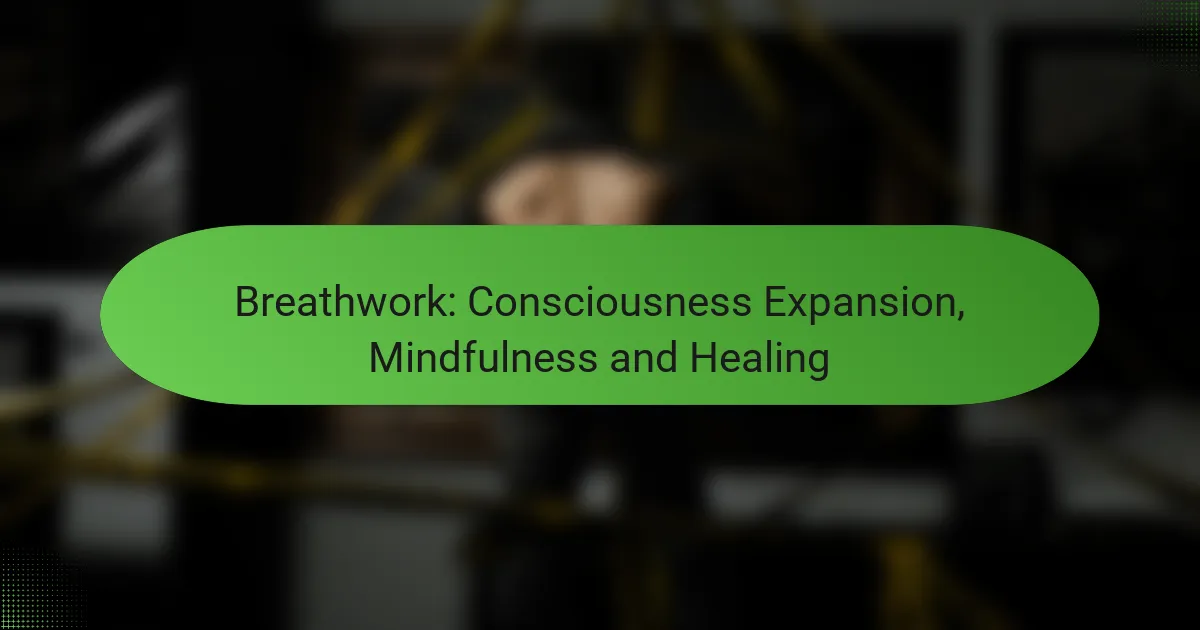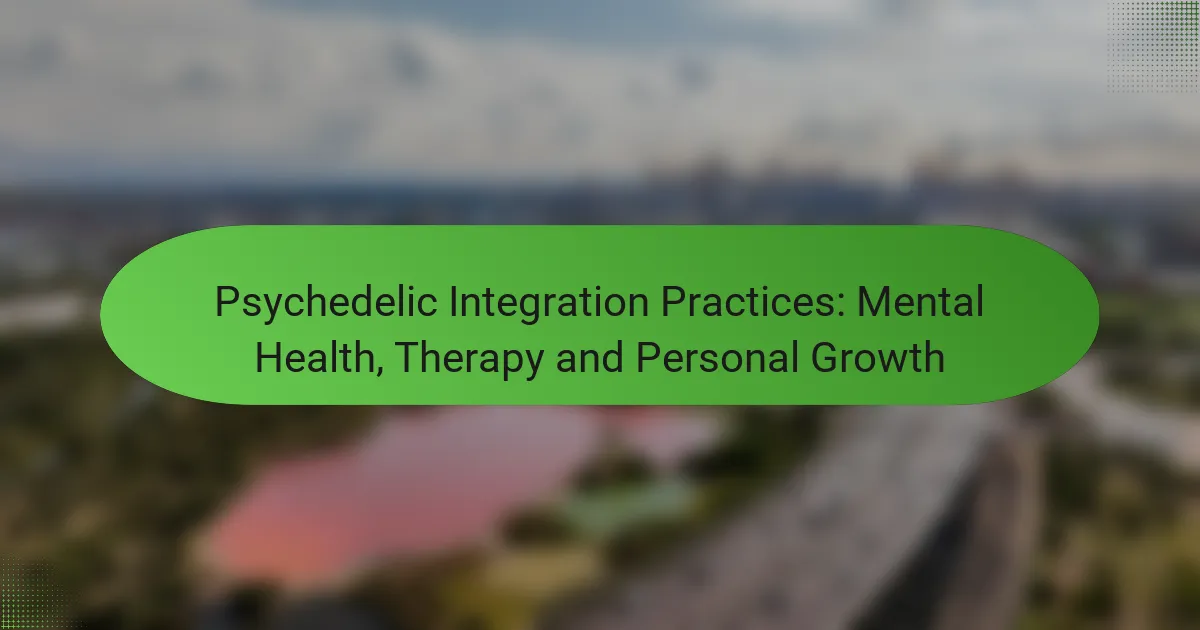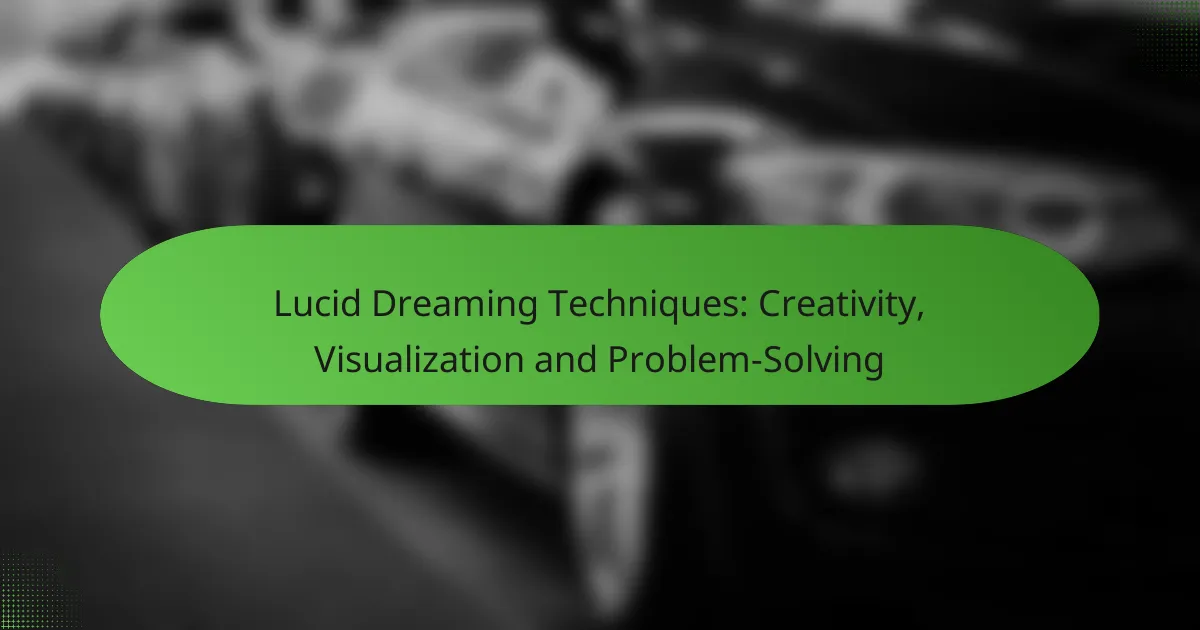Holotropic Breathwork is a powerful practice that utilizes controlled breathing techniques to access altered states of consciousness, enabling individuals to confront and process deep-seated emotions. This transformative experience is often enhanced by group dynamics, which foster a sense of safety and connection among participants, amplifying the therapeutic effects of the practice.

How Does Holotropic Breathwork Facilitate Emotional Release?
Holotropic Breathwork facilitates emotional release by using controlled breathing techniques to access altered states of consciousness. This practice allows individuals to confront and process deep-seated emotions, leading to significant personal transformation.
Accessing deep emotional states
During Holotropic Breathwork, participants engage in rapid, rhythmic breathing that can induce altered states of consciousness. This process helps individuals bypass the analytical mind, allowing them to access profound emotional states that may be difficult to reach in everyday life. As a result, participants often encounter feelings that have been suppressed or overlooked.
By creating a safe and supportive environment, facilitators encourage participants to explore these deep emotional states without judgment. This exploration can lead to insights and revelations about personal experiences and emotional patterns.
Promoting cathartic experiences
Catharsis is a key aspect of Holotropic Breathwork, as it enables participants to release pent-up emotions through physical and emotional expression. Many individuals report experiencing intense emotional releases, such as crying, laughter, or even physical movements, during sessions. These cathartic experiences can provide a sense of relief and liberation.
Facilitators often guide participants to embrace these moments, emphasizing that expressing emotions is a vital part of the healing process. This release can lead to a greater sense of well-being and emotional balance.
Enhancing self-awareness
Holotropic Breathwork fosters self-awareness by encouraging participants to reflect on their thoughts and feelings during and after sessions. As individuals confront their emotions, they often gain insights into their behaviors, motivations, and relationships. This heightened self-awareness can lead to personal growth and improved emotional regulation.
Journaling or sharing experiences with the group after a session can further enhance this self-awareness. Participants can articulate their insights and receive feedback, which can deepen their understanding of themselves and their emotional journeys.
Facilitating trauma processing
Holotropic Breathwork can be a powerful tool for processing trauma, as it allows individuals to confront and integrate painful memories in a safe space. The altered state of consciousness can help participants revisit traumatic experiences without becoming overwhelmed, enabling them to reframe and heal from these events.
Working with trained facilitators ensures that participants have the support they need during this challenging process. It is crucial to approach trauma processing with care, as some individuals may require additional therapeutic support outside of breathwork sessions.
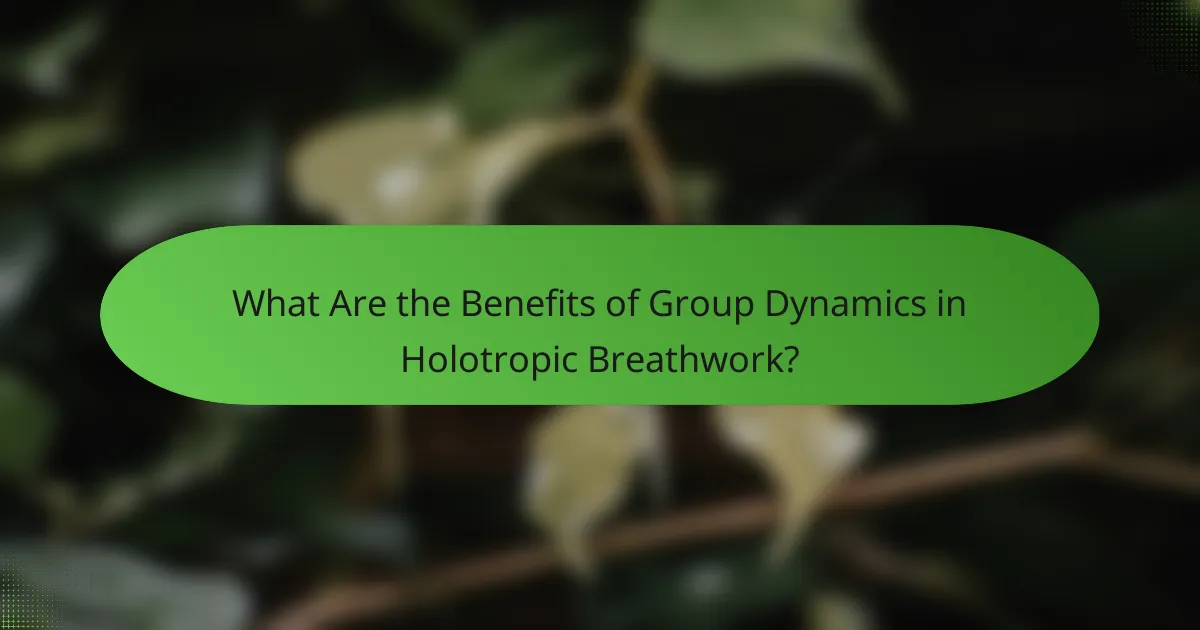
What Are the Benefits of Group Dynamics in Holotropic Breathwork?
Group dynamics in Holotropic Breathwork enhance emotional release and personal transformation by fostering a sense of safety, connection, and shared experience among participants. These dynamics can amplify the therapeutic effects of the practice, making it more impactful for individuals.
Creating a supportive environment
A supportive environment is crucial in Holotropic Breathwork as it allows participants to feel safe while exploring deep emotional states. This safety is often cultivated by the presence of trained facilitators and the collective energy of the group, which encourages openness and vulnerability.
To create this environment, facilitators should establish clear guidelines and ensure that everyone understands the process. Encouraging participants to respect each other’s space and emotions helps maintain a nurturing atmosphere.
Encouraging shared experiences
Shared experiences during Holotropic Breathwork can significantly enhance the emotional release process. When participants engage in breathwork together, they often find commonalities in their journeys, which can lead to a deeper understanding of their own emotions and those of others.
Facilitators can encourage shared experiences by incorporating group discussions before and after sessions, allowing participants to express their feelings and insights. This practice not only validates individual experiences but also strengthens the group’s bond.
Fostering connection and community
Fostering connection and community is a vital aspect of Holotropic Breathwork that can lead to lasting relationships among participants. As individuals share their experiences and support one another, they often develop a sense of belonging that extends beyond the sessions.
To nurture this community, facilitators can organize follow-up gatherings or online forums where participants can continue to connect and share their journeys. This ongoing support can enhance personal growth and reinforce the benefits gained during the breathwork sessions.

What Techniques Are Used in Holotropic Breathwork?
Holotropic Breathwork employs specific techniques to facilitate emotional release and personal transformation. The primary methods include breath patterns, music integration, and guided facilitation, each contributing to the overall experience.
Breath patterns and rhythms
Breath patterns in Holotropic Breathwork are typically accelerated and deep, designed to alter consciousness and promote emotional release. Participants often engage in circular breathing, which means inhaling and exhaling continuously without pauses. This technique can lead to altered states of awareness, allowing individuals to access deeper emotional layers.
It is essential to maintain a comfortable rhythm that feels natural to the individual. Beginners may start with shorter sessions, gradually increasing duration as they become more accustomed to the practice. Monitoring one’s physical and emotional responses during breathing is crucial to ensure a safe experience.
Music and sound integration
Music plays a vital role in Holotropic Breathwork, as it helps to guide the emotional journey and enhance the overall experience. The selection typically includes a range of genres, from soothing melodies to more intense rhythms, designed to evoke various emotional states. Participants may find that certain tracks resonate more deeply, facilitating emotional release.
Sound can also create a supportive atmosphere, encouraging participants to surrender to the process. Facilitators often curate playlists that align with the intended journey, ensuring a cohesive experience that complements the breathwork techniques.
Guided facilitation methods
Guided facilitation in Holotropic Breathwork involves trained facilitators who provide support and structure throughout the session. They help create a safe environment and may offer verbal guidance or prompts to assist participants in navigating their emotional experiences. This support is crucial, especially for those new to the practice.
Facilitators also monitor the group dynamics, ensuring that participants feel comfortable and supported. They may intervene if someone appears to be struggling, helping them to process their emotions effectively. It’s recommended to choose sessions led by certified facilitators to ensure a safe and transformative experience.

How to Choose a Holotropic Breathwork Facilitator?
Selecting a Holotropic Breathwork facilitator is crucial for a safe and transformative experience. Look for individuals with the right qualifications, relevant experience, and positive participant feedback to ensure effective guidance during the sessions.
Qualifications and certifications
When choosing a facilitator, verify their qualifications and certifications in Holotropic Breathwork or related fields. Look for credentials from recognized institutions, such as the Grof Transpersonal Training program, which is widely respected in the community.
Additionally, consider facilitators who have training in psychology, counseling, or other therapeutic disciplines. This background can enhance their ability to support participants emotionally and psychologically during sessions.
Experience and specialization
Experience is vital when selecting a Holotropic Breathwork facilitator. Aim for someone with several years of practice and a history of leading group sessions. This experience often translates to better handling of group dynamics and individual needs.
Some facilitators may specialize in particular areas, such as trauma release or spiritual exploration. Identifying a facilitator whose focus aligns with your personal goals can enhance your overall experience.
Participant testimonials
Reading participant testimonials can provide valuable insights into a facilitator’s effectiveness and style. Look for reviews that mention the facilitator’s ability to create a safe space, their support during emotional releases, and the overall group atmosphere.
Consider seeking out testimonials from multiple sources, such as online forums or social media groups dedicated to Holotropic Breathwork. This can help you gauge the facilitator’s reputation and the experiences of others who have attended their sessions.
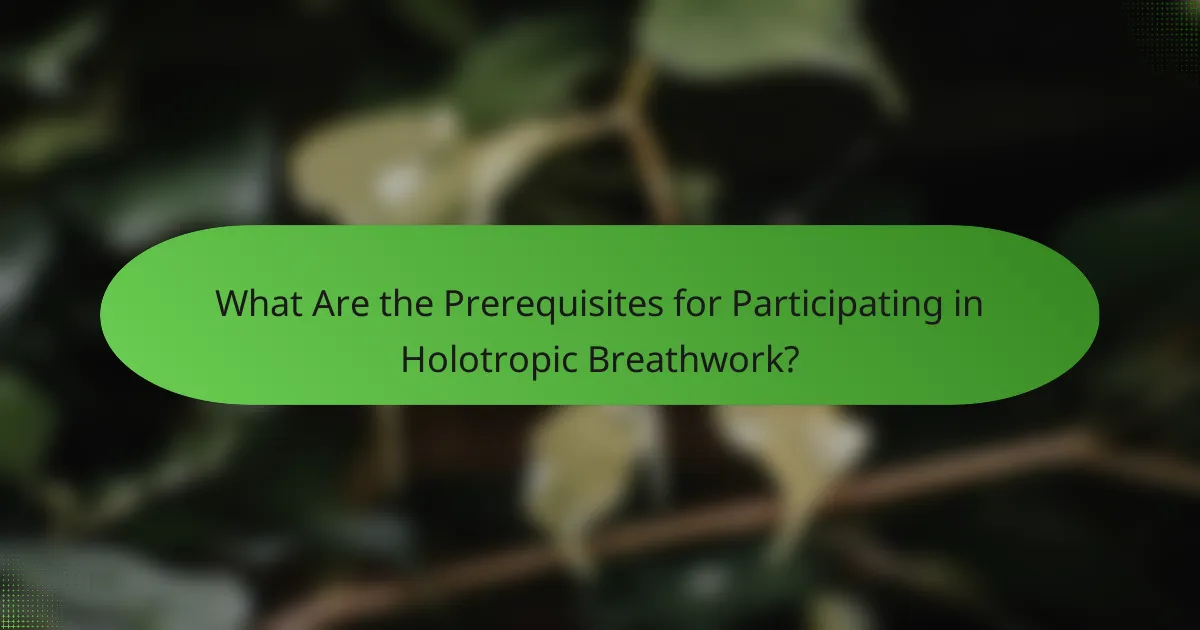
What Are the Prerequisites for Participating in Holotropic Breathwork?
To participate in Holotropic Breathwork, individuals should have a basic understanding of the process and be in a suitable physical and mental state. It is essential to consider personal health, emotional readiness, and the presence of a trained facilitator for guidance and safety.
Physical health considerations
Before engaging in Holotropic Breathwork, participants should evaluate their physical health. Conditions such as cardiovascular issues, respiratory problems, or severe mental health disorders may pose risks during the intense breathing sessions. Consulting with a healthcare professional is advisable to ensure safety.
Individuals should also be mindful of their current physical state. Factors like fatigue, dehydration, or recent surgeries can affect the experience. It is recommended to arrive well-rested, hydrated, and in a comfortable state to maximize the benefits of the session.
Additionally, participants may want to consider any medications they are taking. Certain medications, especially those affecting mood or respiration, could interact with the breathwork process. A discussion with a healthcare provider can clarify any potential concerns.
